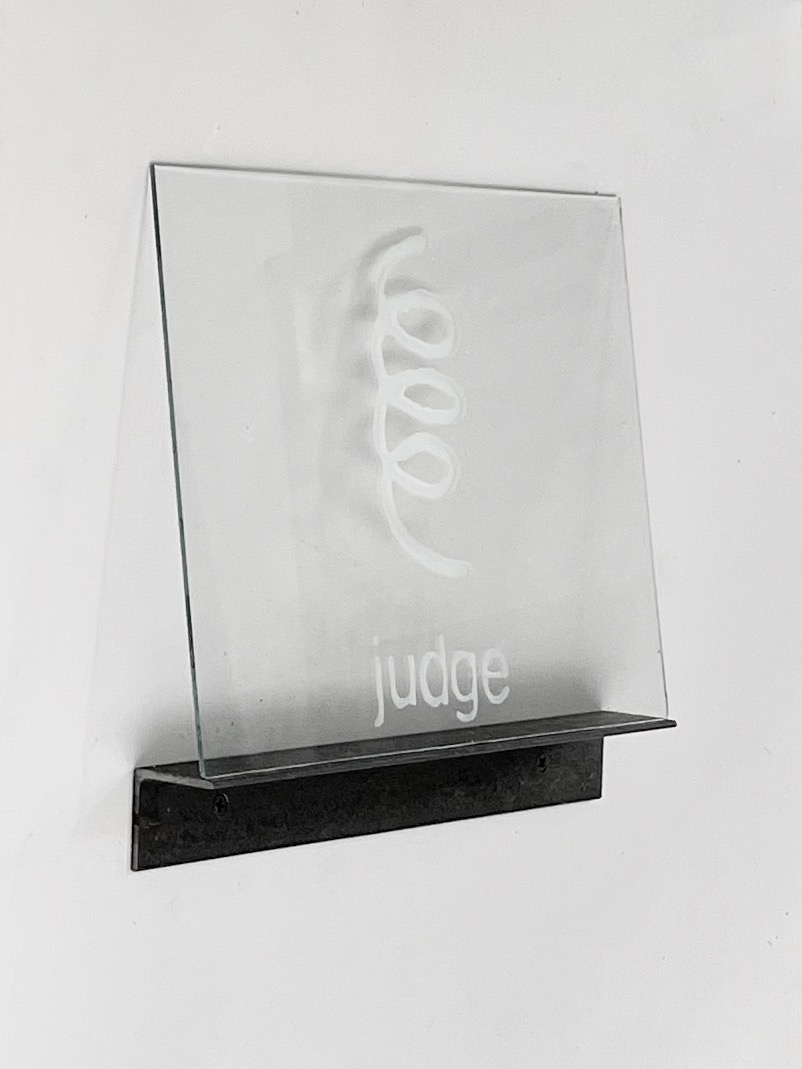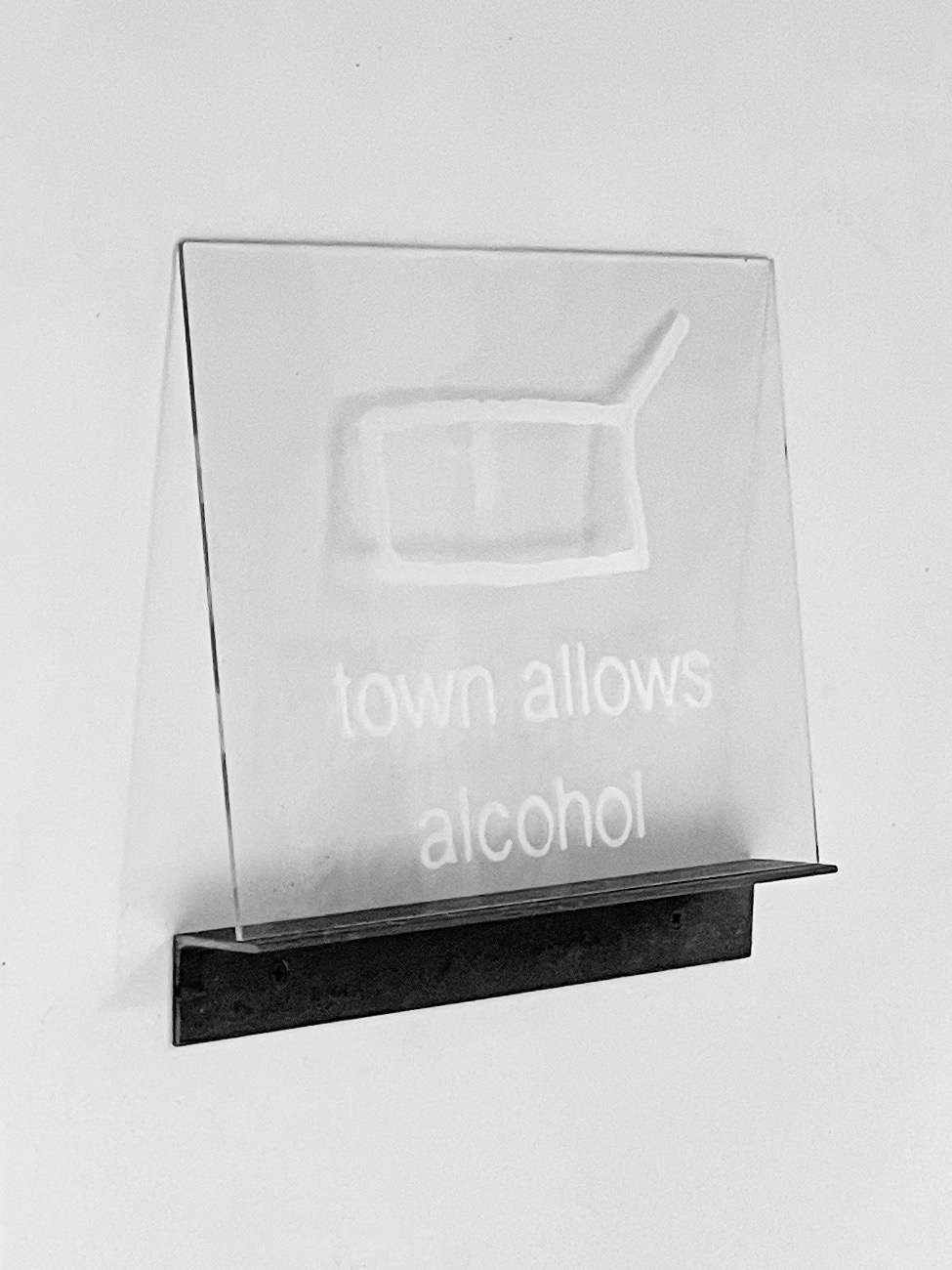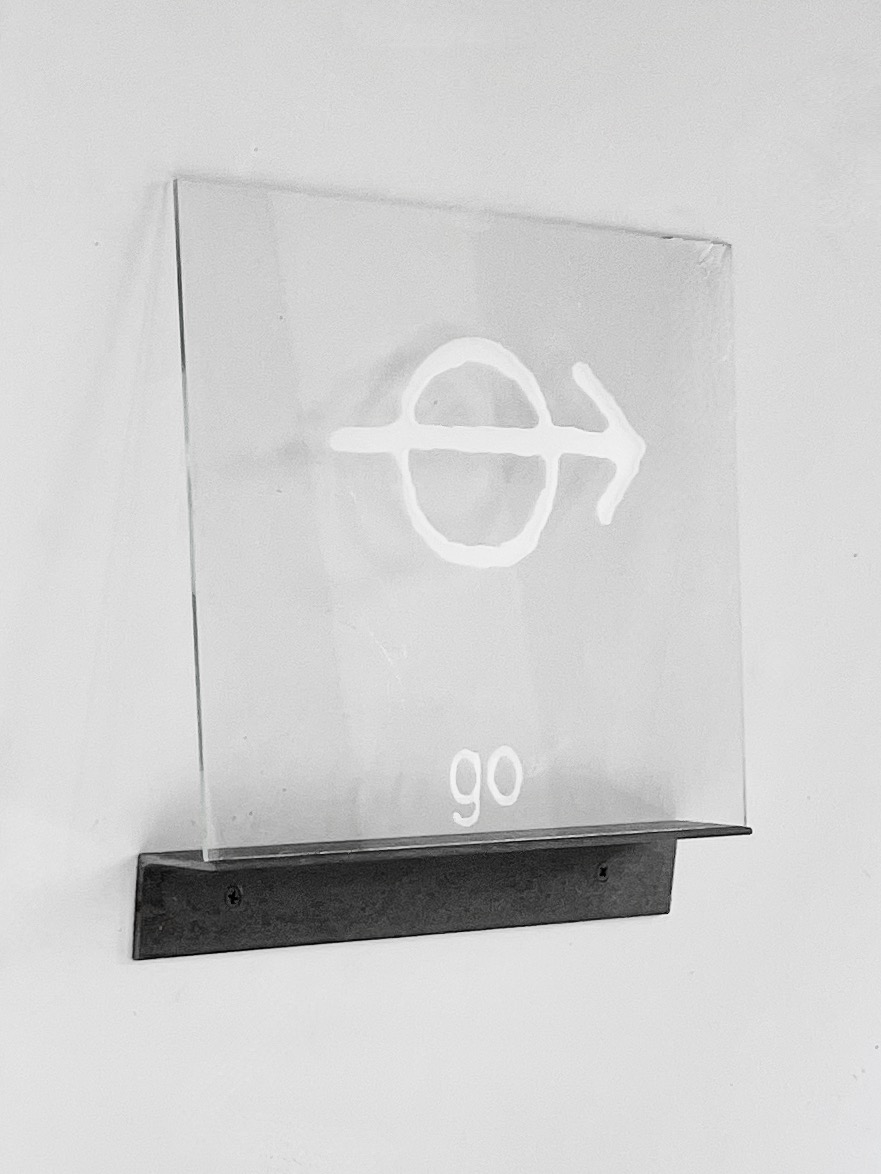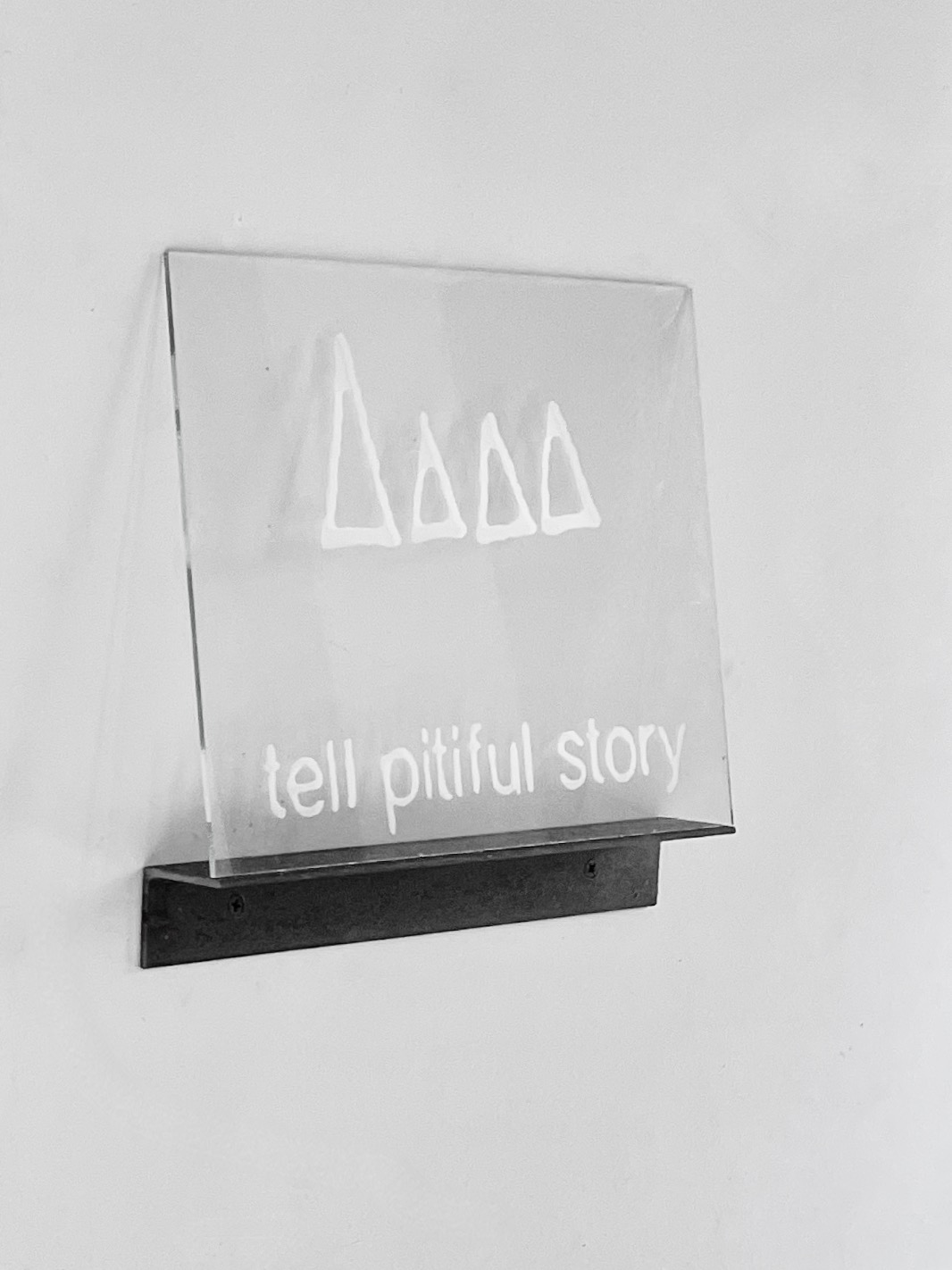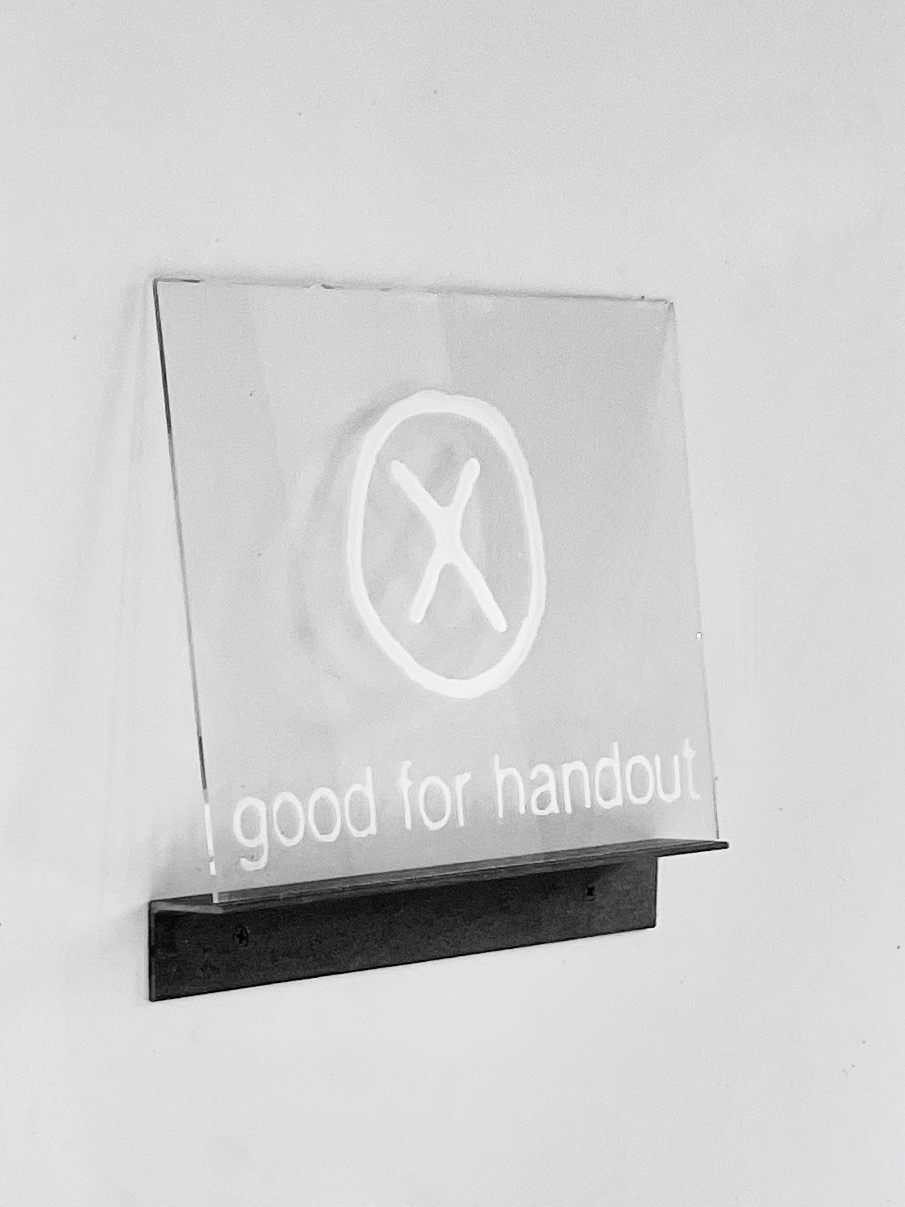noble language / vulgar tongues, 1999

noble language / vulgar tongues, 1999
diptych, each panel 145cm x 180cm x 10cm
pigment on paper
presented in the context of the exhibition ellipsis
Koffler Gallery, Toronto, January 7 - February 27, 1999
noble language / vulgar tongues acknowledges that in an information-driven society, information is privileged over meaning and more subjective forms of expression, verbal, oral, somatic, are increasingly marginalized.
The title “noble language” refers to an idealized language, self-conscious, objective, abstract, cerebral. Adopting a carefully measured style, it is language honed and shaped for a public audience and invested with a sense of permanence. By contrast “Vulgar tongues” embraces the spoken word and communications which are subjective, immediate spontaneous, unpredictable and potentially transgressive. Denoting a personalized language, it is visceral and clearly references the primacy of the body.
Juxtaposed, the phrases accentuate the disjunction between textual and oral communication, text and subtext, mind and body, while underscoring our attendant systems of valuation.
speak / unspeakable, 1994
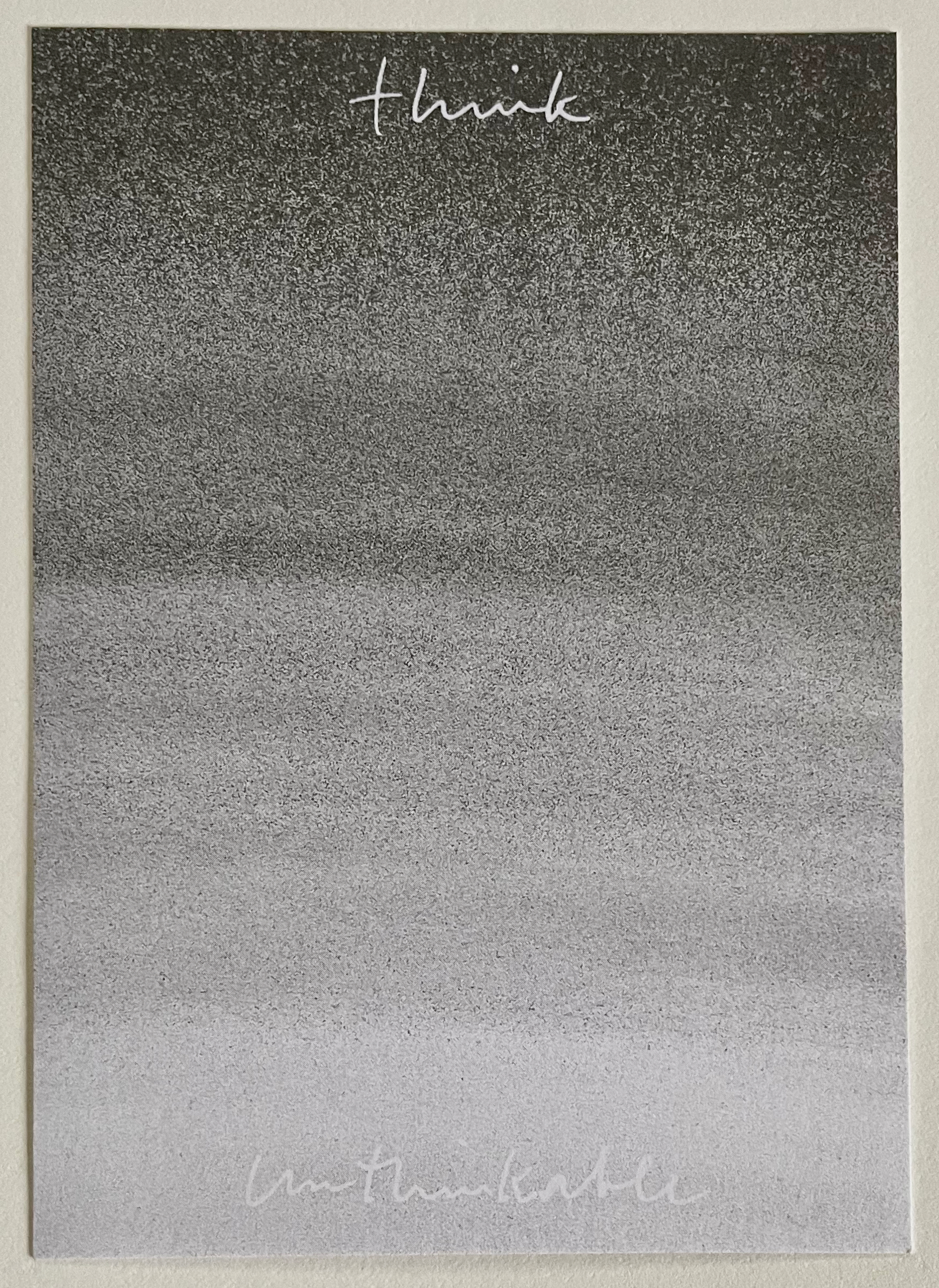
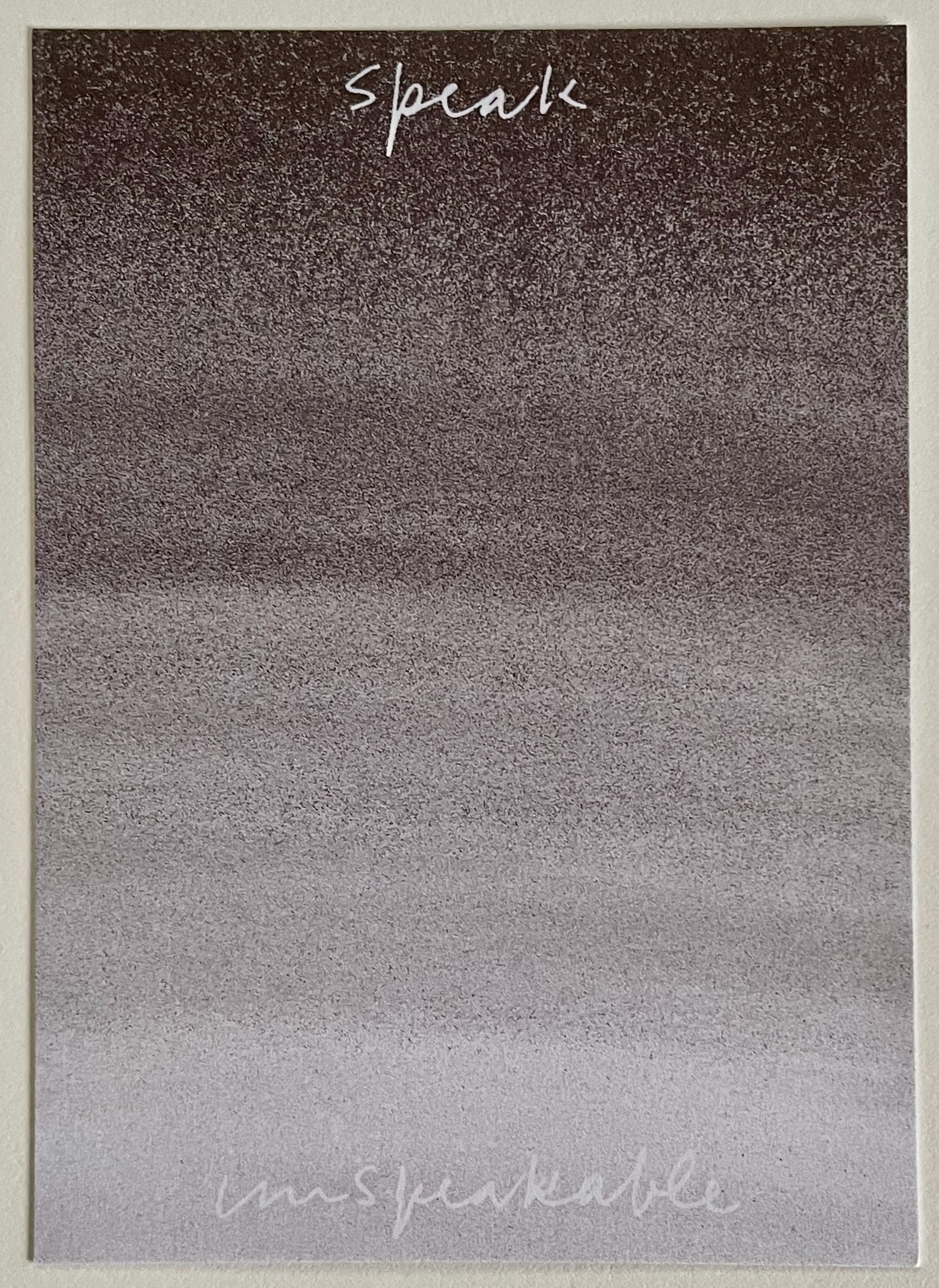
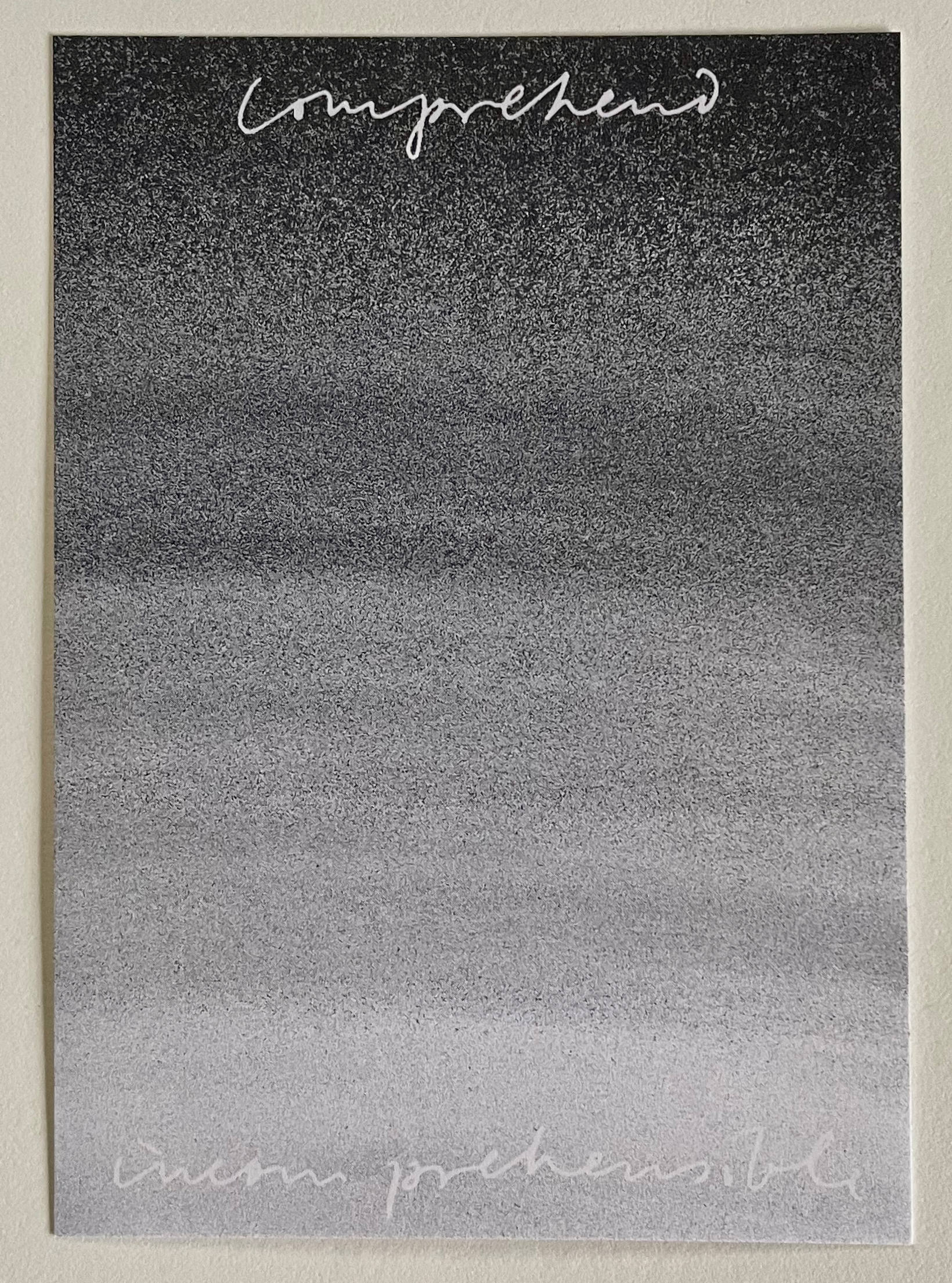
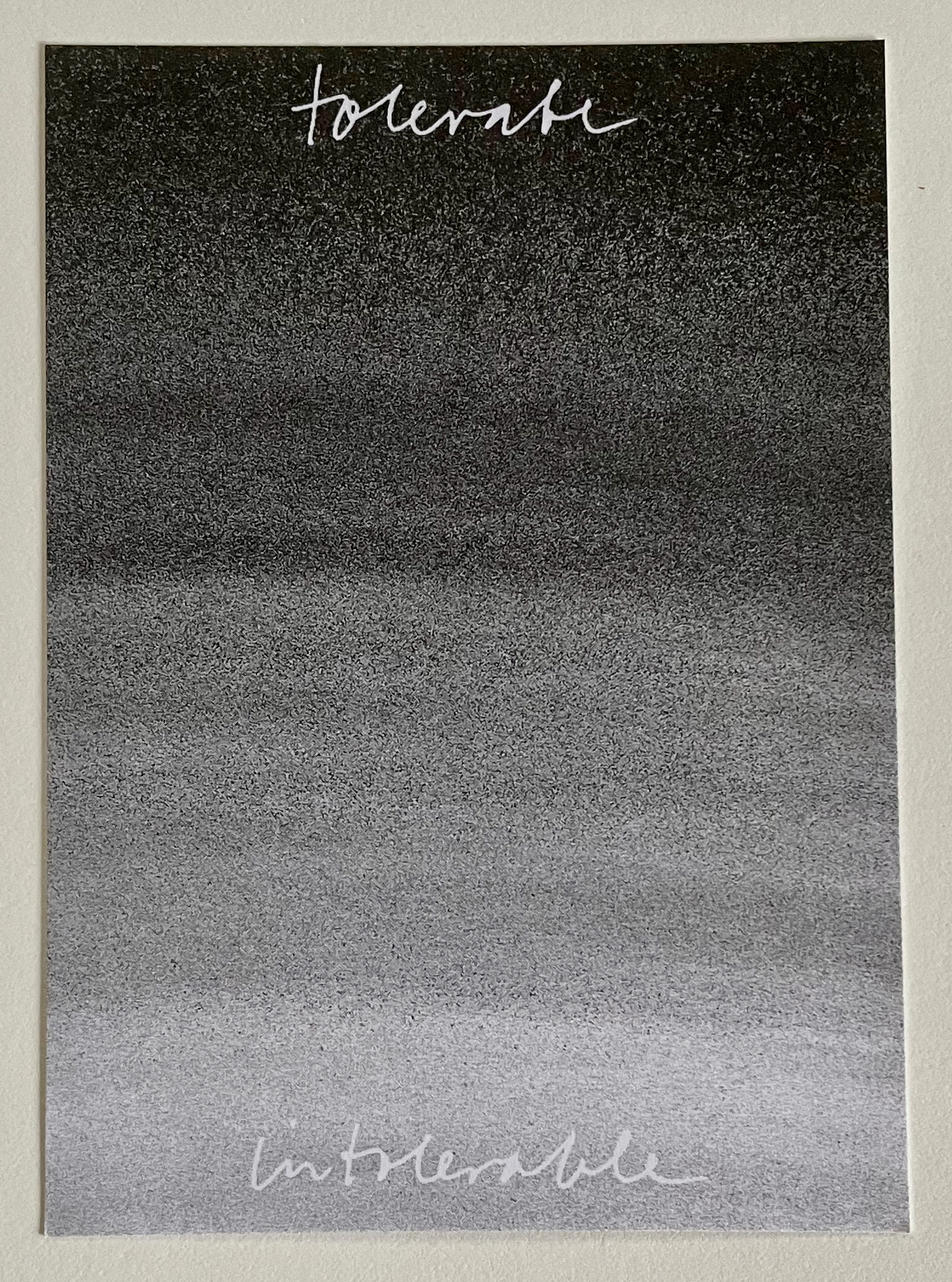
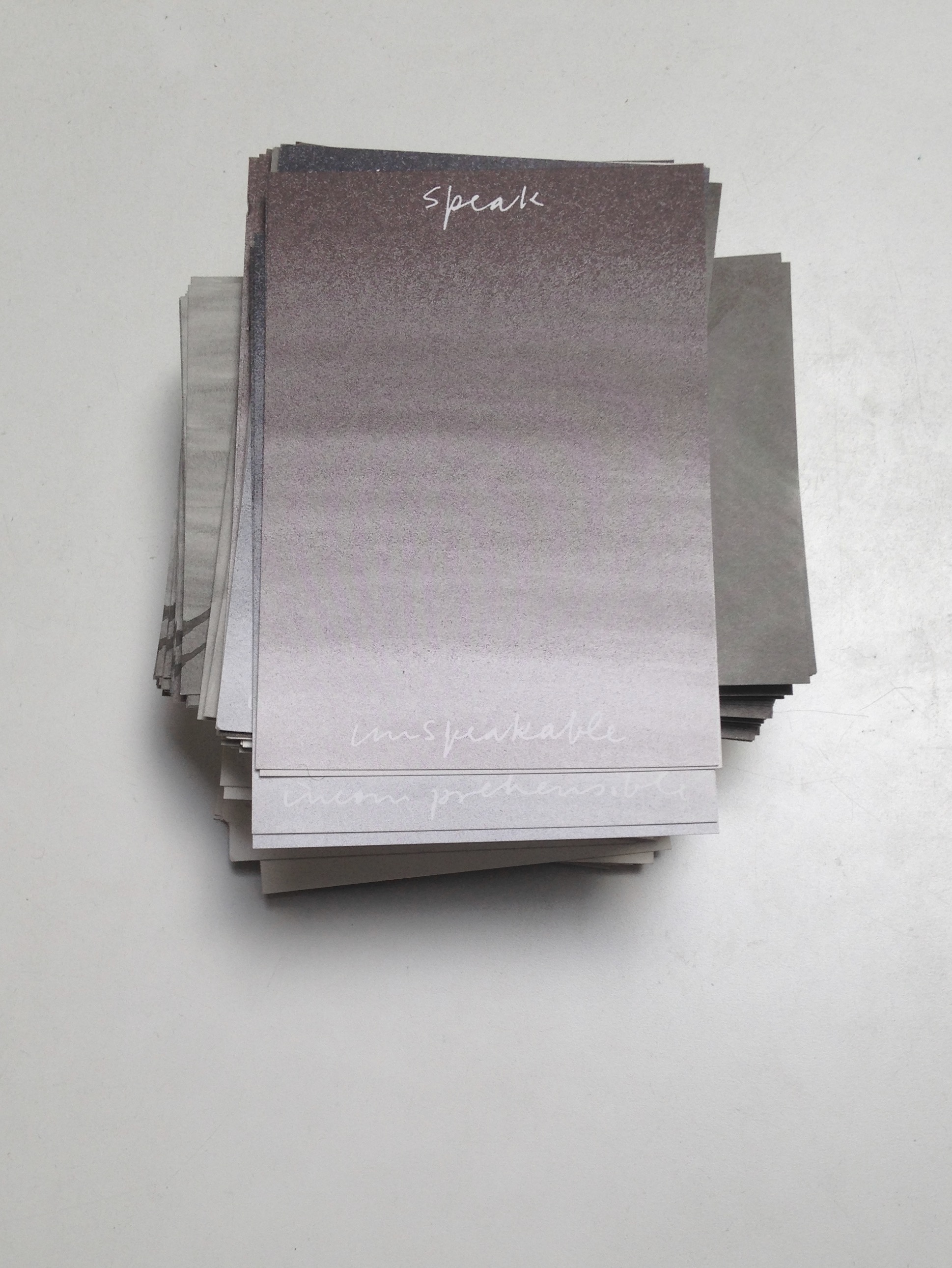

Speak /
Unspeakable, 1994
think / unthinkable
speak / unspeakable
comprehend / incomprehensible
tolerate / intolerable
set of 4 cards, each 10cm X 15cm
a mail project 1994 - 1995
Contrasting terms are inscribed as opposites at the top and bottom on each of the four cards. They make visible, the process, deliberations or preconditions necessary for the formulation and articulation of a definition of ethical and moral codes. Boundaries, differentiating between tolerable and unacceptable norms or actions emerge.
think / unthinkable
speak / unspeakable
comprehend / incomprehensible
tolerate / intolerable
set of 4 cards, each 10cm X 15cm
a mail project 1994 - 1995
Contrasting terms are inscribed as opposites at the top and bottom on each of the four cards. They make visible, the process, deliberations or preconditions necessary for the formulation and articulation of a definition of ethical and moral codes. Boundaries, differentiating between tolerable and unacceptable norms or actions emerge.
think/unthinkable, 1994
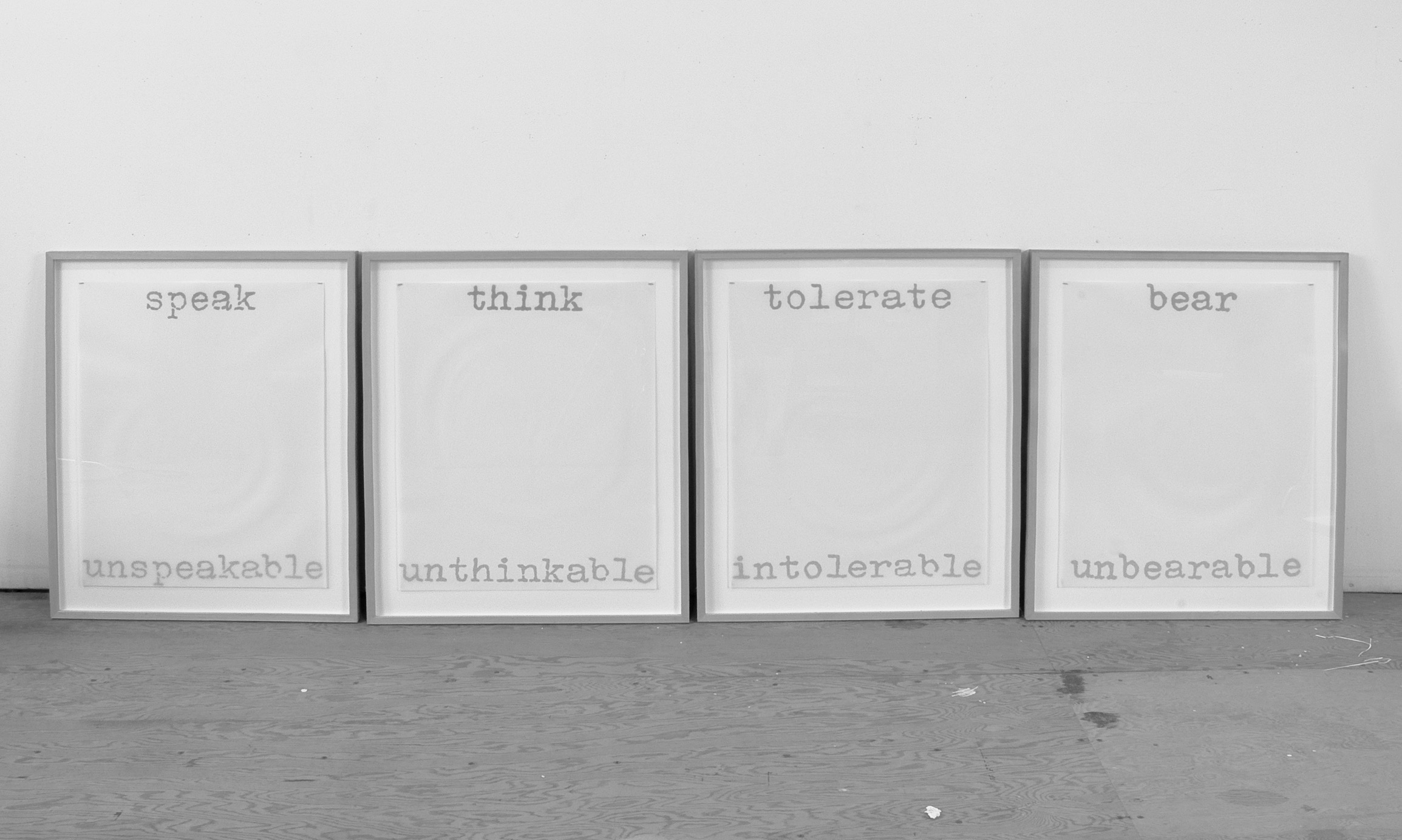
Think /
Unthinkable, 1994
speak / unspeakable
think / unthinkable
tolerate / intolerable
bear / unbearable
4 units
graphite on tracing paper
speak / unspeakable
think / unthinkable
tolerate / intolerable
bear / unbearable
4 units
graphite on tracing paper

Presents for the thief, 1998
18 - 20 panels of etched glass, each 30cm x 20cm
metal brackets, each 32cm x 4cm x 6cm
This work forms part of a series dealing with language systems outside traditional or established forms of communication. Often they emerge as a response to situations where survival is threatened under unusual conditions, likely for specific or marginalized communities.
HOBO sign systems, also known as GAUNERZINKEN, are a form of pictograms drawn in chalk in public places as a means of indicating danger or goodwill towards migrant workers known as HOBOS. This coded communication system emerged during the depression area.
Presents for the thief differentiates between stealing and gifting. The notion of presenting a gift to a thief, throws into question
any assumption attached to the definition of stolen or looted goods in relation to goods presented as gifts. The categories of a perpetrator or a thief and a donor or recipient of a gift take on new meaning. With the blurring of clear distinctions of the intentions of an individual, a considered judgement establishing right and wrong become ambiguous.
18 - 20 panels of etched glass, each 30cm x 20cm
metal brackets, each 32cm x 4cm x 6cm
This work forms part of a series dealing with language systems outside traditional or established forms of communication. Often they emerge as a response to situations where survival is threatened under unusual conditions, likely for specific or marginalized communities.
HOBO sign systems, also known as GAUNERZINKEN, are a form of pictograms drawn in chalk in public places as a means of indicating danger or goodwill towards migrant workers known as HOBOS. This coded communication system emerged during the depression area.
Presents for the thief differentiates between stealing and gifting. The notion of presenting a gift to a thief, throws into question
any assumption attached to the definition of stolen or looted goods in relation to goods presented as gifts. The categories of a perpetrator or a thief and a donor or recipient of a gift take on new meaning. With the blurring of clear distinctions of the intentions of an individual, a considered judgement establishing right and wrong become ambiguous.
